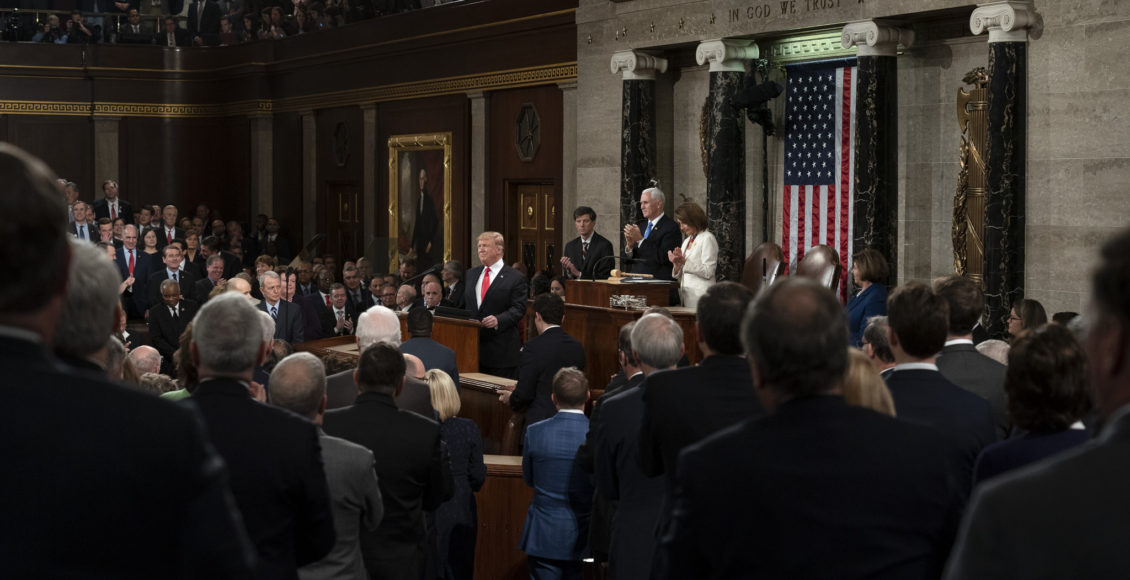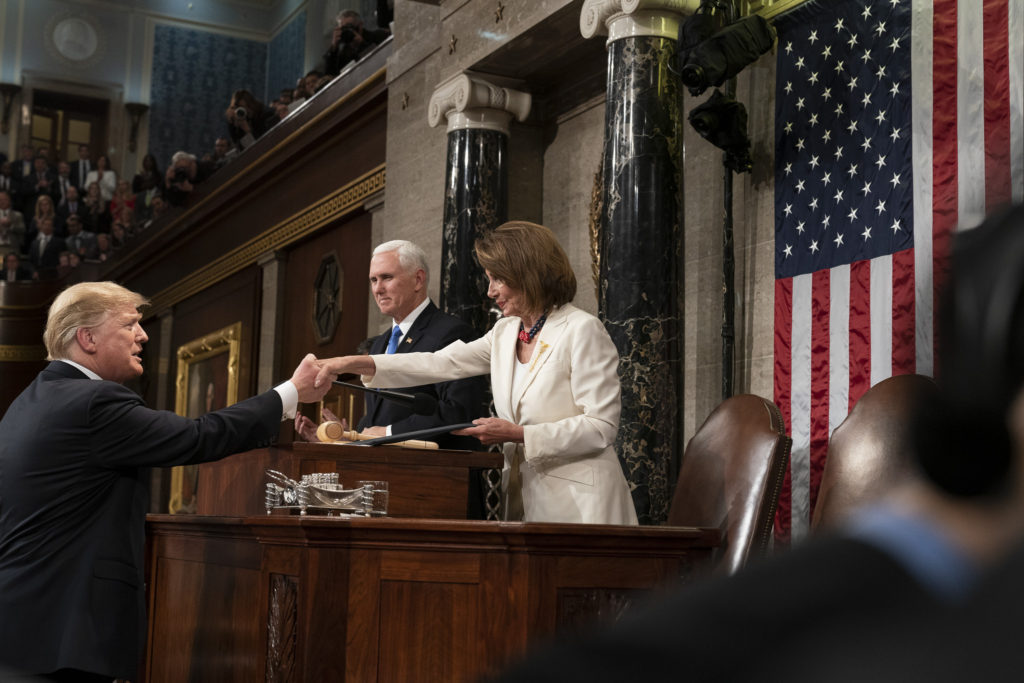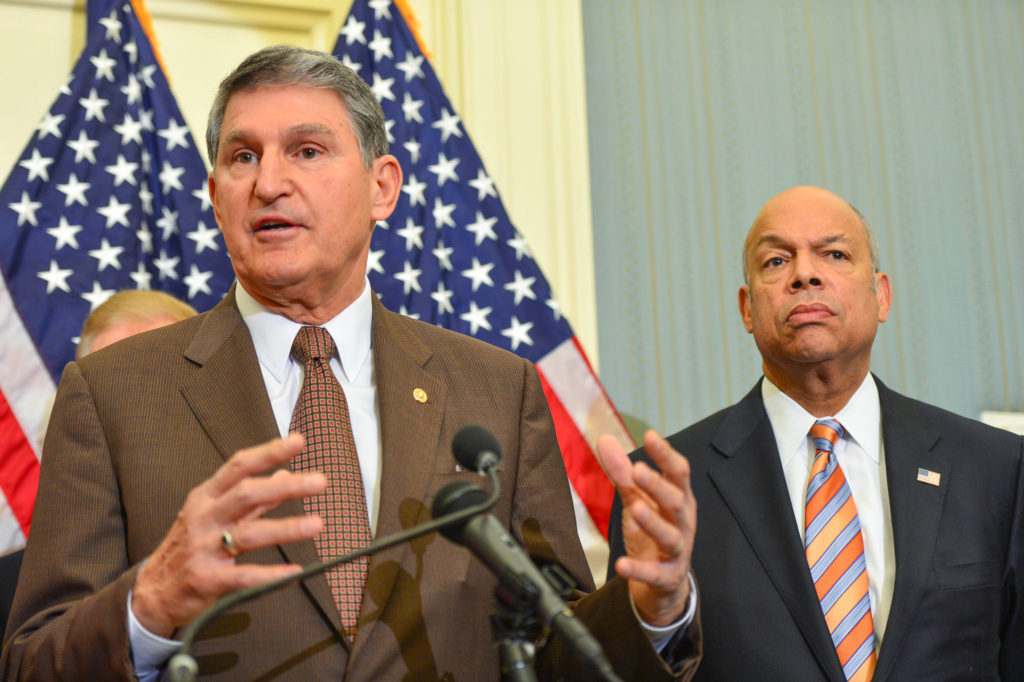A Picture Worth a Thousand Words: The Politics Behind the State of the Union
 (Official White House Photo by D. Myles Cullen)
(Official White House Photo by D. Myles Cullen)
On February 5th, U.S. President Donald Trump delivered the State of the Union, an annual address given by the American president to a joint session of Congress. This year’s speech, which clocked in at 82 minutes (the third-longest in history), touched on a wide variety of issues, from the booming economy to border security.
Historically, the State of the Union has aimed to address US voters and foreign interests to detail the past year’s political situation; typically the administration’s accomplishments. However, in order to get a clear picture of the state of American politics, reading a transcript of the address is not enough. Many of the issues outlined by President Trump in his speech directly contradict his administration’s actions. For example, he highlighted the need to fight HIV/AIDS: “My budget will ask Democrats and Republicans to make the needed commitment to eliminate the HIV epidemic in the United States within 10 years. Together, we will defeat AIDS in America.” Yet, this promise comes after the Trump administration dismissed the entire Presidential Advisory Council on HIV/AIDS and has moved to defund Planned Parenthood, which provides affordable HIV testing. Furthermore, the president underlined the need for bipartisanship and cooperation, only to bypass Congress and declare a state of emergency to fund a border wall two weeks later.
While the speech itself might not say much about the actual state of the union, many other aspects of the event are telling. Lawmakers do not leave details to chance and use the opportunity of being seen by a national audience to promote their political agendas and convey some of their policy stances.

One element that can be used to make an explicit statement is clothing. During the 2019 State of the Union, a majority of Democratic House women, including Speaker Nancy Pelosi, dressed in all-white. White, a colour associated with suffragettes, was chosen to celebrate the hundredth anniversary of the 19th amendment. President Trump acknowledged the jubilee in his speech, which led to the biggest and loudest applause of the night. The decision to wear a common colour created a striking image: a sea of women in white standing before a president who has supported many policies negatively affecting reproductive rights and equal pay. It was also a colour of celebration after a record number of women were elected to Congress during the midterms, and Nancy Pelosi regained the speakership.
Some Democrats also used pins to make a statement during the address. Many wore an “ERA YES” green pin, in support for the ratification of the Equal Rights Amendment. And a few lawmakers, including freshman Alexandria Occasio-Cortez, wore pins honouring Jakelin Caal, the seven-year Guatemalan girl who died in U.S. custody after crossing the border with her family.
Lawmakers are all allowed to bring guests to the address, a tradition started under Ronald Reagan, and often select the people who accompany them to reflect their individual agendas.
Presidential hopeful and Senator, Cory Booker, brought Edward Douglas, a former inmate who was released under a criminal justice reform act sponsored by Booker. Many legislators, including presidential candidate and Senator, Kirsten Gillibrand, invited transgender service members, to illustrate their opposition to the administration’s ban on allowing transgender people to serve in the military. Some, including Senate Minority Leader Chuck Schumer, brought federal workers who had been affected by the shutdown. Others invited immigrants affected by the administration’s various policies. Every lawmaker’s guest was carefully chosen to highlight an issue important to them. To predict which policy points will be debated during the year, glancing over the guest list might be an effective way to predict what Congress members will prioritize.
The politics of clapping during the State of the Union address are also telling of the state of politics. It is tradition that lawmakers will frequently clap and stand up during the address if the president is from their party, while law makers from the other party tend to remain seated and quiet. However, it is expected that lawmakers from both parties will clap for bipartisan issues. Carefully watching who defers from the established conventions can indicate the opinions of certain lawmakers. For example, Democratic Senator Joe Manchin, who often crosses the aisle to vote with Republicans, was one of the only Democrats who stood up and clapped when Trump mentioned a ban on late-term abortions. Manchin, who just got reelected in deep-red West Virginia, decided to send a signal that he will not be limited by party lines, by clapping for policies more popular with Republicans than Democrats. Newly elected Senator Kyrsten Sinema of Arizona was also one of the lone Democrats who stood up at various moments. Days later, Sinema and Manchin were two of the three Democrats who voted to confirm William Barr as Attorney General. Watching which lawmakers clap for which policies can be a good indicator of how they will vote; as exemplified by Manchin and Sinema, who ignored party lines both during the address and on the Senate floor.

It is also interesting to note that one of the moments that drew the most applause from both sides was Trump’s promise that “America will never be a socialist country.” Many Democrats have embraced policies like Medicare-for-All, free colleges, and higher taxes on the wealthy which has led to the GOP to warn voters of a potential socialist take-over if the Democrats win the White House in 2020. However, by applauding at Trump’s jab at socialism, the Democrats rejected the more radical label Republicans have been trying to pin on them.
The last major component from the address that can be revealing is the person chosen to deliver the response to the State of the Union. Since the 1960s, the party that does not control the White House selects one or two individuals to deliver an official response broadcasted almost directly after the end of the presidential address. This year, the Democrats chose former gubernatorial candidate Stacey Abrams, who became the first African American woman to deliver the rebuttal. In recent years, both parties have chosen up-and-comers to give the response, to introduce them to a broader audience. Choosing Abrams illustrates that Democrats consider her a rising star of the party, despite her loss to Brian Kemp in November. Furthermore, it indicates to minority voters that the party recognizes their importance to the Democratic success.
The contrast between the address and the response was stark simply because the Democrats chose Abrams. On one hand, there was Trump, an old, white man who inherited millions. On the other hand, there was a younger woman of colour, who has not been afraid to discuss her financial struggles. While this might seem superficial, perception is what matters here. By picking Abrams, Democrats presented a very different idea of leadership and offered a clear rebuttal of Trump’s overall brand.
While it is up for debate if the State of the Union is a useful tradition and positively contributes to the political discourse, there is no sign of this custom ending anytime soon. This year, even the longest government shutdown in American history did not lead to its cancellation. Therefore, as you tune in next year to hear President Trump discuss immigration and the economy, remember to observe the lawmakers sitting before him to gain a better understanding of the actual state of American politics.
Edited by Alexandra Yiannoutsos
